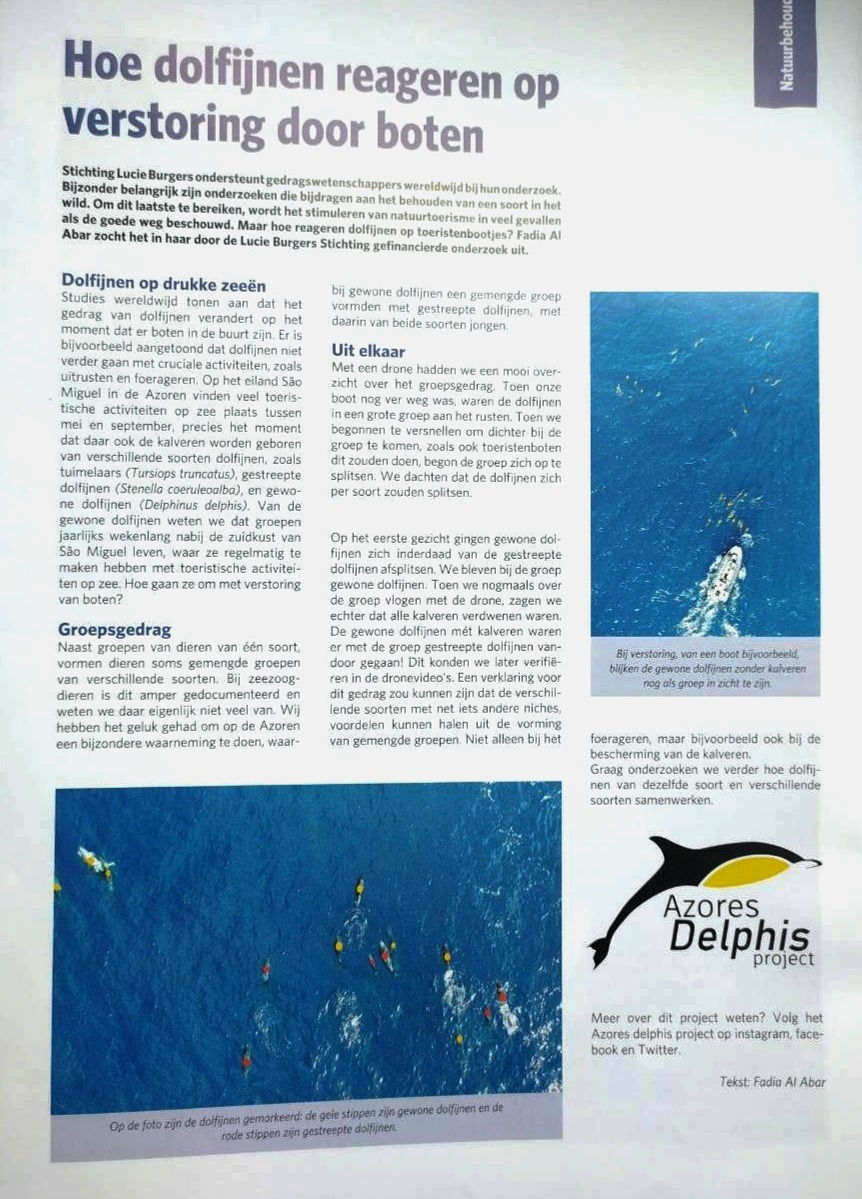How mixed species of dolphins respond to disturbance from boats
- Fadia Al Abbar
- Jan 9, 2022
- 2 min read
Updated: Feb 22, 2022
Lucie Burgers Foundation supports behavioral scientists worldwide in their research. Particularly important are studies that contribute to the conservation of a species in the wild. To achieve the latter, in many cases the promotion of eco-tourism is considered the right way. But how do dolphins react to tourist boats? Fadia Al Abbar investigated this in her research funded by the Lucie Burgers Foundation.
Dolphins in busy seas
Studies worldwide show that dolphin behavior changes when tourist boats are nearby. For example, dolphins have been shown to stop performing crucial activities such as resting and foraging. On the island of São Miguel in the Azores, many tourist activities at sea take place between May and September, which is exactly when the calves of different dolphin species are born, such as bottlenose dolphins (Tursiops truncatus), striped dolphins (Stenella coeruleoalba), and common dolphins (Delphinus delphis). Of the common dolphins, we know that groups live for weeks each year near the south coast of São Miguel, where they regularly have to deal with tourist activities at sea. How do they deal with disruption of boats?
Group behavior
If we look at group animals in general, such as bison, gazelles, and elephants, we see that they form groups because it gives them benefits. For example, animals that raise young together can defend themselves against predators. They can reduce risks by working together as a team and use certain tactics. A simple example is that in a group several animals can keep an eye on them while others are foraging, or hunting. Marine mammals can also use such tactics against boats. In addition to groups of animals of one species, animals sometimes form mixed groups of different species. In marine mammals, this has hardly been documented and we don't really know much about it. We were lucky enough to make a special sighting in the Azores, where common dolphins formed a mixed group with striped dolphins, containing both species of calves.

Photo above: common dolphins (yellow dots) mixed with striped dolphins (red dots)
Split
With a drone we had a nice overview of group behaviour. When our boat was still far away, the dolphins were resting in a large group. As we started to speed up to get closer to the group, as tourist boats would, the group started to split up. We thought the dolphins would split by species. At first glance, common dolphins did indeed split from the striped dolphins. We stayed with the pod of common dolphins. However, when we flew over the group again with the drone, we saw that all the calves had disappeared. The common dolphins with calves had left with the group of striped dolphins! We were able to verify this later in the drone videos. An explanation for this behavior could be that the different species with slightly different niches can benefit from the formation of mixed groups. Not only when foraging, but also, for example, when protecting the calves. We would like to further investigate how dolphins of the same species and different species work together.

Photo above: upon disturbance, only adult common dolphins were left nearby the vessel
Author: Fadia Al Abbar
Content copied & translated from Dutch, from Ziezoo Magazine

For original content, see below:


Yorumlar